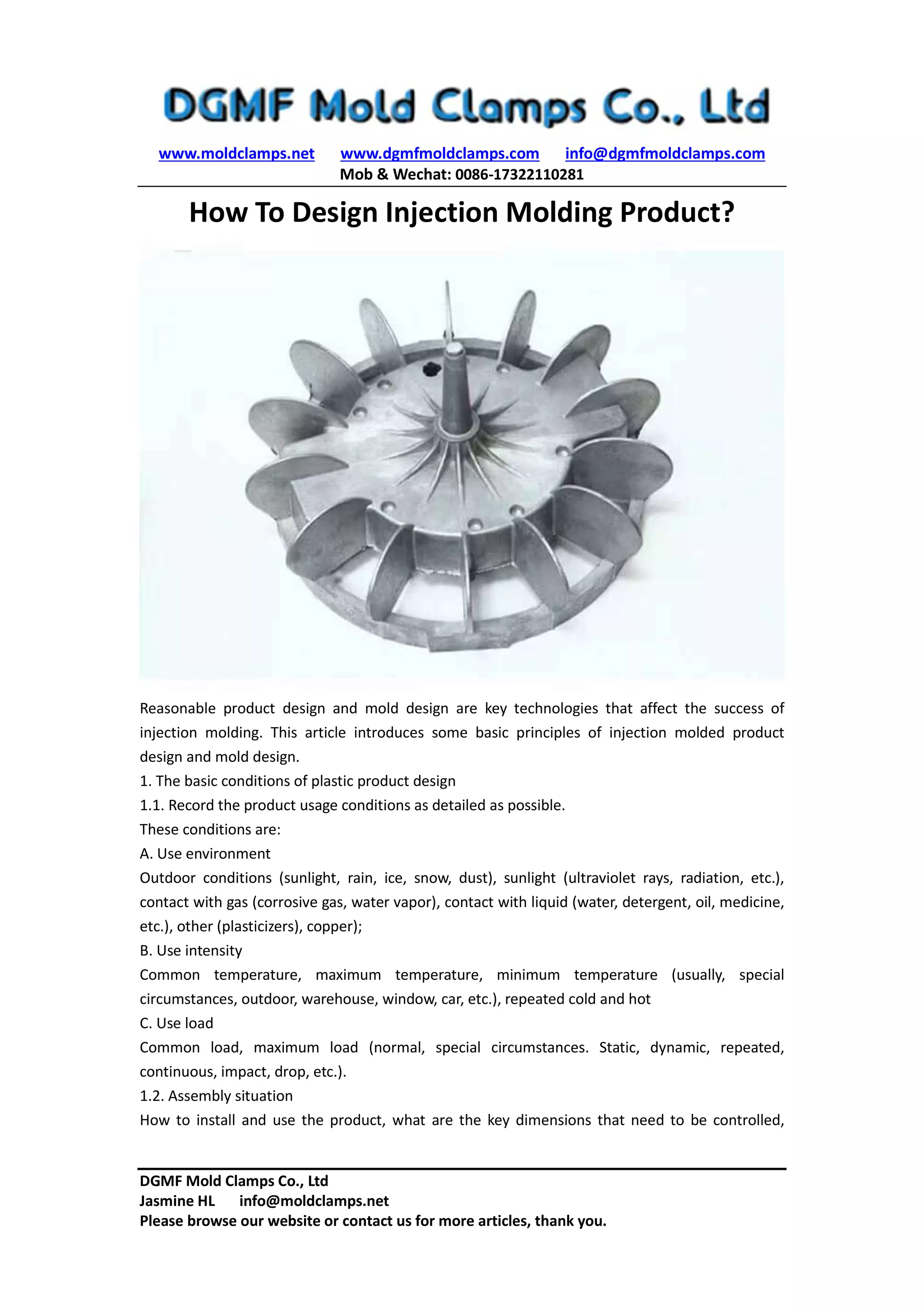The document outlines essential principles and procedures for designing injection molded products and molds, emphasizing the importance of considering product usage conditions, assembly requirements, and design details for effective manufacturing. Key design aspects highlighted include wall thickness, reinforcement techniques, ensuring dimensional accuracy, and addressing visual quality issues such as shrinkage. It also provides guidelines for enhancing product strength and facilitating mold manufacturing while considering surface treatments like painting and bonding.











